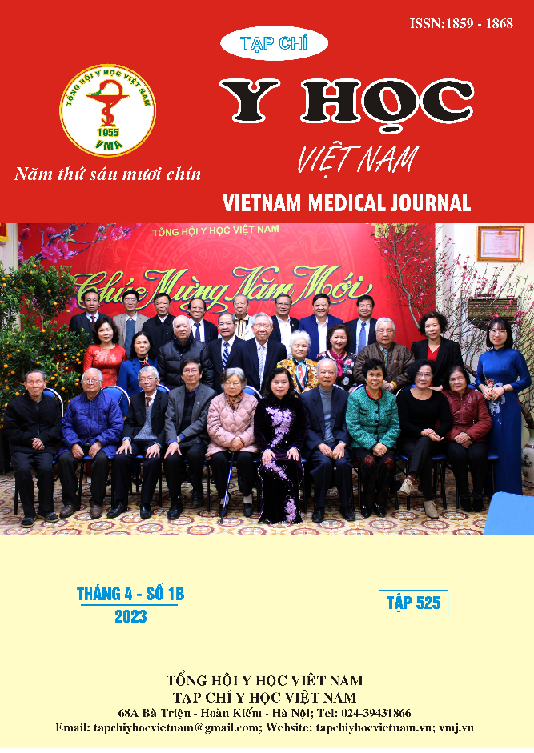OUTCOMES OF ENDOVASCULAR TREATMENT FOR CHRONIC ILIO-FEMORAL ARTERY STENOSIS WITH CHRONIC LIMB-THREATENING ISCHEMIA
Main Article Content
Abstract
Overview: Chronic limb – threatening ischemia is associated with increased mortality, risk of amputation and impaired quality of life. Lower extremity bypass is a traditional surgery for combined ilio-femoral lesions. Endovascular intervention is a new trending treatment for this disease. Objectives: The outcomes of endovascular intervention for chronic ilio-femoral artery stenosis with chronic limb – threatening ischemia. Methods: A retrospective study was conducted to identify the cases who underwent endovascular intervention for chronic ilio – femoral artery stenosis with chronic limb – threatening ischemia, at Cho Ray Hospital from January 2016 until February 2020. Results: Total 43 patients ( 45 interventional limbs) with mean age of 71.4 ± 10.9, majority male, were enrolled. All patients were diagnosed with chronic limb – threatening ischemia stage, total TASC C,D lesions accounted for 77.8% and 82.2% in iliac and femoral artery respectively. Revascularization was successfully on 93.3% lesions, complication rates was 11.1%. The follow-up time was 12 months, clinical success was 94.7%, hemodyamic success was 89.5%, survival rate was 92.5%, limb salvage rate was 97.6%. Conclusion: Endovascular intervention for chronic ilio-femoral artery stenosis with chronic limb – threatening ischemia has a high success rate and safety.
Article Details
References
2. Ghoneim B., et al., "Management of critical lower limb ischemia in endovascular era: experience from 511 patients", The International journal of angiology: official publication of the International College of Angiology, 2014, Inc, 23(3), pp. 197.
3. Jongkind V., et al., "A systematic review of endovascular treatment of extensive aortoiliac occlusive disease", Journal of vascular surgery, 2010, 52(5), pp. 1376-1383.
4. Kobayashi N., et al., "Predictors of non‐healing in patients with critical limb ischemia and tissue loss following successful endovascular therapy", Catheterization and Cardiovascular Interventions, 2015, 85(5), pp. 850-858.
5. Marston W. A., et al., "Natural history of limbs with arterial insufficiency and chronic ulceration treated without revascularization", Journal of vascular surgery, 2006, 44(1), pp. 108-114.
6. Norgren L., et al., "Inter-society consensus for the management of peripheral arterial disease (TASC II)", Journal of vascular surgery, 2007, 45(1), pp. 5-67.
7. Ortiz D., et al., "Access site complications after peripheral vascular interventions: incidence, predictors, and outcomes", Circulation: Cardiovascular Interventions, 2014, 7(6), pp. 821-828.
8. Soga Y., et al., "Comparison of clinical outcome after bypass surgery vs. endovascular therapy for infrainguinal artery disease in patients with critical limb ischemia", Circulation Journal, 2013, pp. CJ-13-0020.


